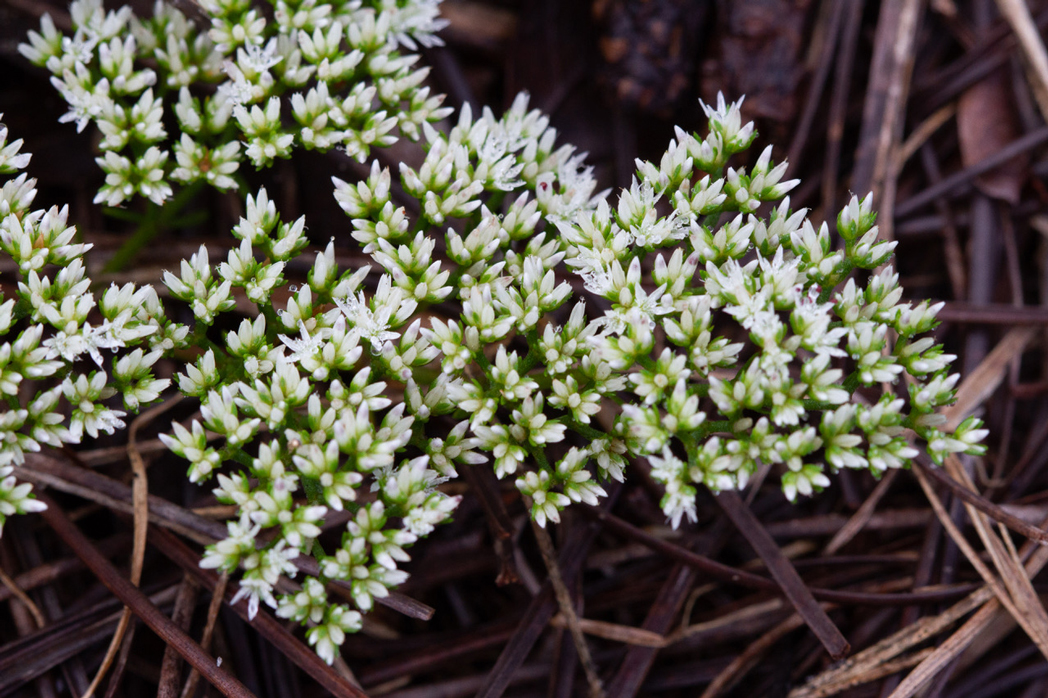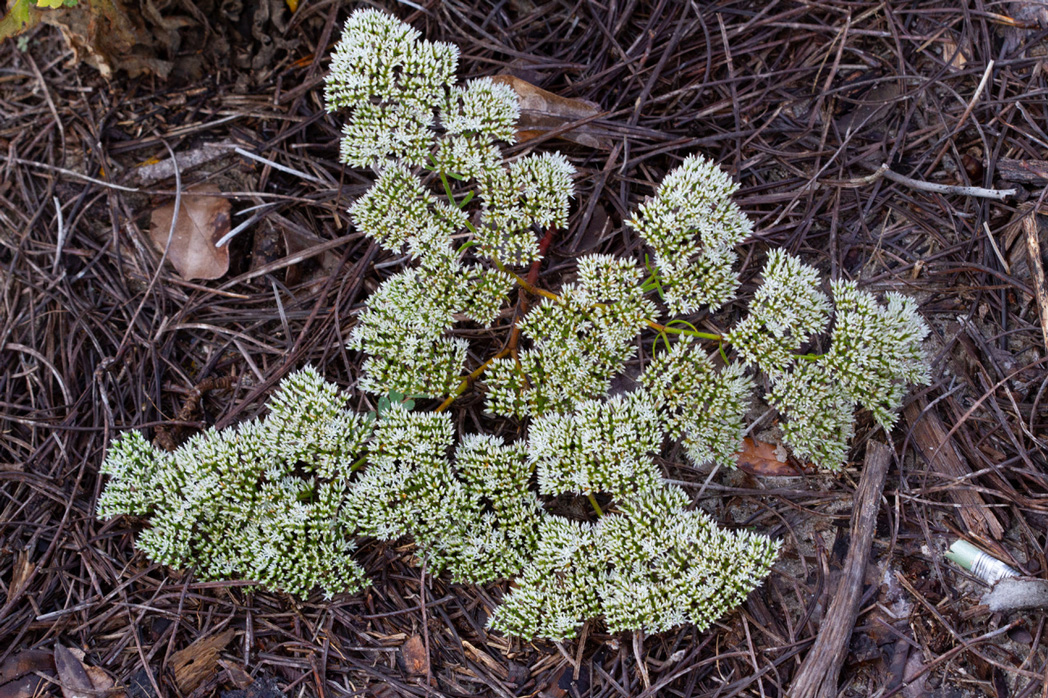Sandsquares
Pictured above: Sandsquares (Paronychia rugelii) by Jim McGinity. Click on terms for botanical definitions. View post as a PDF.
Also known as Rugel’s nailwort, Sandsquares is one of Florida’s most unique wildflowers. It occurs naturally in sandy habitats such as pine flatwoods, sandhills, scrub and disturbed areas. And as its name implies, it has a square inflorescence! Sandsquares bloom from summer into early fall, attracting mostly small bees. The plant is easily overlooked due to its short stature.
Sandsquares’ tiny flowers are white but may appear to have a pink or reddish-brown tinge. They are born in numbers of 15 to 50 or more in square, terminal cymes. Petals are absent. Sepals are fused and have pointed apices. Leaves may be linear, lanceolate or oblong and are oppositely arranged. Basal leaves are petiolate while stem leaves are sessile and appressed. Stems are erect and branched. Fruits are small, single-seeded utricles. Nearly the entire plant is covered with hairs.

The genus Paronychia was named for the disease of the same name, a fungal or bacterial infection of the fingernail. The plant was believed to be a cure for the disease. The common name “nailwort” is also a reference to the plant’s presumed medicinal properties. The species epithet rugelii (as well as the common descriptor “Rugel’s”) is an homage to German-born botanist and pharmacist Ferdinand Ignatius Xavier Rugel (1806–1879) who explored Florida and collected nearly 1,000 specimens for herbariums.
Family: Caryophyllaceae (Pink or carnation family)
Native range: North and central peninsula (western and central counties); Leon and Clay counties
To see where natural populations of Sandsquares have been vouchered, visit florida.plantatlas.usf.edu.
Lifespan: Annual or biennial
Soil: Dry, well-drained sandy soils
Exposure: Full sun to high pine shade
Growth habit: Up to 12” tall and equally wide
Propagation: Seed
Florida regions of landscape suitability: North, Central
Garden tips: Sandsquares’ low growth profile works well as a groundcover in dry, sunny landscapes. The plant is dormant in winter.
Sandsquares is occasionally available from nurseries that specialize in Florida native plants. Visit www.PlantRealFlorida.org to find a nursery in your area. Seeds may be available from the Florida Wildflower Growers Cooperative at www.FloridaWildflowers.com.
Learn more about Sandsquares from the Florida Native Plant Society.

